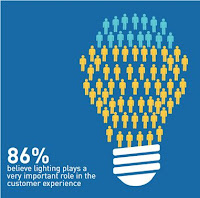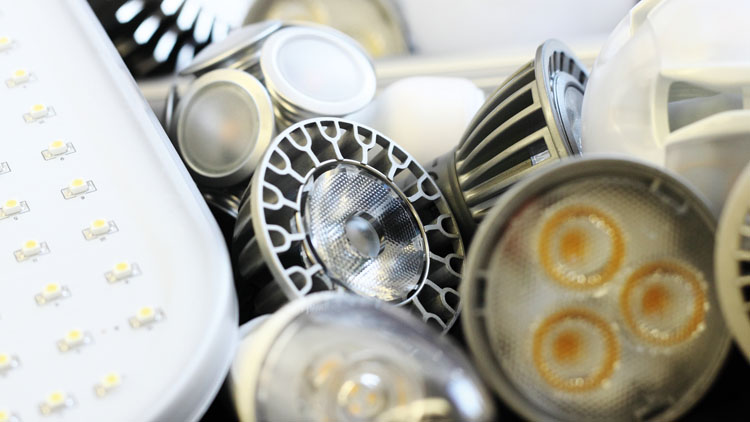TAG | led gu10s
25
Megaman Survey Shows Lighting Is Big Business For Hospitality Sector
Comments off · Posted by admin in LED, LED GU10, LED MR16 lamps, LED Spots
86% of hospitality professionals believe lighting plays a very important role in the customer experience. The findings of the survey, sponsored by Megaman, reveal that lighting is big business in the hospitality sector:
- only 1% of those surveyed think lighting is of no importance in the customer experience.
The findings show that good lighting encourages guests to stay longer and come back for more:
- 72% have left a venue earlier than planned because it was too brightly- or poorly-lit
- 74% have stayed longer than planned because the lighting made them feel relaxed and welcome.
Respondents thought a well-lit venue is:
- “somewhere that draws you in” (36% of respondents)
- “somewhere to spend time” (34%)
- “somewhere to go back to” (26%)
- none of the above (4%).
The survey revealed that respondents thought that upfront lighting refurbishment costs are less important than ambience. When making decisions on new lighting in a venue, hospitality professionals say that key considerations are:
- the effect and ambience of the new lighting (67%)
- the ability of staff to dim the lights (43%)
- energy bill/CO2 savings (31%)
- the upfront costs (23%).
Overall, 43% of those surveyed have been involved in a lighting refurbishment in their present or previous venue and said:
- the new lighting had been well received by customers – 84% of customers gave positive feedback on the lighting refurbishment
- good lighting boosts business – 91% think the lighting refurbishment had a positive impact on business in terms of an uplift in sales or profits
- education is still needed about the benefits of LEDs.
Only half of all hospitality professionals (49%) think a halogen lamp ban next year would be a positive change for them, while 36% say it would not affect them at all and 15% think that a ban will have a negative impact on them.
Fred Bass, managing director of Neonlite International, the brand owner of Megaman, said: “This survey supports what we are seeing in our day-to-day business within the hospitality sector – good quality lighting is appreciated and a well-lit scheme attracts customers who stay longer and spend more.
“However, the one area where I think we are at the cusp of a tipping point is in the understanding of the benefits of LEDs amongst the majority of those in the hospitality sector. Although half of those surveyed say that they think the banning of halogen lights and introduction of LED equivalents would be positive, there is still another half who are unsure.
“As more and more bars, restaurants and hotels experience the benefits of the latest in LED lighting technology, I believe we will see a dramatic sea-change in favour of LEDs.”
hopsitality led · hospitality lighting · led ambient lighting · LED downlights · led gu10s · LED lamps · LED spots · Megaman LED · Novel Energy Lighting
Lux reports: The adoption of dimmable LED lighting for new installations is rising fast, but with a vast retrofit market to address, there is an opportunity for further growth if the user experience can be optimised. LED lighting has already captured the imagination of consumers in a way that CFLs never did with LED lamps offering many of the energy-saving benefits of compact fluorescents but in a much more familiar package.
Consumers are able to buy lamps that look like the incandescent lamps they are replacing, which makes for a more comfortable switch. However, they are also expecting the dimming performance to be replicated and this is where a lack of information can lead to disappointing results.
Here are our top tips for getting the best out of retrofit dimmable LED lighting.
It is a common misconception that any LED lights can be dimmed with an LED dimmer”
DO choose dimmable LEDs
The number one rule for successfully dimming LED lighting might sound obvious but it is a common misconception that any LED lights can be dimmed with an LED dimmer. In reality, the driver circuitry must be designed with dimming in mind. Therefore, it is essential to choose lamps that the manufacturer describes as ‘dimmable’. The lack of an industry standard for dimmable LED drivers has, though, led to a myriad of different approaches by lamp manufacturers, some more successful than others.
Choose ‘dimmable’ lamps but be aware that this in itself is not a guarantee of a good dimming performance. It is, however, a good starting point.
DO stick to recognised brands
There is a lot of variation in the dimming performance, under test, of LED lamps described as dimmable. In particular, the achievable brightness range and stability of output are the features most likely to disappoint with unbranded lamps.
Some manufacturers are happy to label their lamps as dimmable even if they can deliver only the smallest change in brightness. Choose lamps from established lighting manufacturers. Aside from dimming considerations, established brands are also more likely to offer better product warranties, longer lamp life and more customer support.
Top tip: Stick to brand names that you can have confidence in and don’t be tempted to make false economies.
The escalating brightness of retrofit LED lamps has made dimming much more relevant”
DO read the label
To deliver a true retrofit comparison with incandescent lighting, it is important to consider the brightness range. Significant advances in LED lighting technology have been made in recent years, achieving far higher lumens per watt, even for the halogen-mimicking warm white lamps, where lamp output is often compromised for the more familiar incandescent hue. There is little point in connecting a dimmer to an LED light if it is dim enough already, so the escalating brightness of retrofit LED lamps has made dimming more and more relevant. Brighter lamps can give customers a greater dimming range.
Top tip: Read the label and select the dimmable lamps with the highest maximum lumen output.
DO ask manufacturers about compatibility
Most established lighting brands publish compatibility data on their websites. Dimmer switches are tested with various loads and the lamp performance graded. These grades are a useful reference point and can help when choosing a dimmer. It can be confusing though, when navigating the websites of international brands, to find dimmers listed that are not available in the UK. If in doubt contact the company to ask about their recommendations.
Top tip: Manufacturers want customers to experience the full potential of their lamps and will often be happy to recommend the best dimmer switch to use.
DON’T use a standard dimmer
Some lamps manufacturers may boast that their dimmable LED lighting can be controlled using a standard dimmer, but where this claim is borne out, it is likely to be true only when some very narrow criteria are met. Standard dimmers will be underloaded in most LED applications, exacerbating flickering and strobing effects, which, in turn, can drastically shorten lamp life. Standard dimmers are also not equipped to exploit the full brightness range, resulting in a disappointing user experience.
Top tip: Take claims of compatibility with standard dimmers with a pinch of salt.
DO choose a dimmer designed for LED lighting
DO choose a dimmer designed for LED lighting
Sophisticated dimmers are available to deliver the best possible performance from dimmable LED lighting. Some have several dimming modes to enable smooth dimming across the diverse driver technologies in the market. The brightness output a lamp produces from the same power input varies markedly between brands. For this reason, some manufacturers now include an adjustable minimum brightness setting so the user can access the full brightness range of a given lamp. An adjustable minimum brightness also ensures that any instability a lamp might exhibit at its lowest level of illumination can be avoided.
Top tip: Dedicated LED dimmers are equipped to exploit an LED lamp’s full dimming potential, better replicating the dimming behaviour of an incandescent lamp.
Design your lighting installation to ensure you don’t exceed the maximum load of the dimmers available”
DON’T buy your luminaires without first selecting a dimmer
Like all dimmer switches, those designed for LED lighting have minimum and maximum load recommendations. Design your lighting installation to ensure you don’t exceed the maximum load of the dimmers available. Splitting the load across more than one dimmer could provide a solution and give greater control by allowing light levels to be zoned in a multi-functional space. Until recently it was difficult to find a dimmer capable of controlling more than 100W of LED lighting, but some recent products open up the possibility of dimming much larger LED loads, up to 600W.
Top tip: It’s important to select a dimmer that can control the total wattage and quantity of lamps you want to dim.
DO read the instruction leaflet
LED dimmers often come with features designed to enhance their performance, but you may have to program the dimmer to access them. Don’t be tempted just to ‘plug and play’ because you may be missing out on features that will give greater expression to your lighting. For example, with some remote-controlled dimmers, enhanced scene-setting features may be unlocked using the dedicated handset. Some manufacturers have released how-to videos on their websites.
Top tip: Read the instruction leaflet or you may miss out on features and benefits.
Contact Novel Energy Lighting to discuss you lamp needs and dimming requirements.
Tel: 0208-540-8287, or email us for more info: sales@novelenergylighting.com
danlers dimmer · led dimmers · led dimming · LED downlights · led GU10 · led gu10s · LED lamps · LED spots · mk logic · Novel Energy Lighting · resload · varilight



